Born on 5 October 1911 in Flobecq (Belgium), in 1929 Robert Triffin matriculated at the University of Louvain where he first attended courses in philosophy and law, and then focused on the study of economics. In 1935, once he had graduated in economic sciences, he moved to the US after receiving a scholarship from the Belgian American Educational Foundation. It was there, in 1938, that he obtained his doctorate from Harvard University (with a thesis on “General Equilibrium Theory and Monopolist Competition”).
He taught at Harvard until 1942, when, with the US entry into the war, he applied for American naturalisation and worked with the Administration by joining the Federal Reserve System. During his years at the Fed, from 1942 to 1946, his activities were mainly focused on cooperation with Latin America, while continuing his work in this field, even after he was transferred in 1946 to the International Monetary Fund.
In 1948 he was appointed to lead the first IMF Representative Office in Europe and joined the negotiations for trade and payments agreements within the Organisation for European Economic Cooperation (which later became the OECD). Concerned with securing himself a broad scope of action on this issue, in 1949 he served the administration of the Marshall Plan (ECA). In this period he established himself as one of the main proponents and negotiators of the European Payments Union set up in 1950.
In 1951 he left his official posts to become a professor in the Department of Economics at Yale University.
In the 25 years following his return to the US, he served as an adviser to several national and international organisations while continuing to teach and publish. His two major works Europe and the Money Muddle (1957) and Gold and the Dollar Crisis (1960) made him an internationally renowned economist and the formulation in his writings of what would later be defined as the “Triffin dilemma” represents a building block in economic thought, with huge implications in terms of political and international institutional arrangements.
During this time he worked as an adviser for the US presidential administration, the European Commission and Jean Monnet’s Action Committee for the United States of Europe.
In particular, in 1960, when he was called to testify before the US Congress, Triffin exposed his “dilemma”, i.e. the contradiction contingent upon the fact that national currency also plays a role as an international reserve currency. On the one hand, giving priority to national currency by curbing deficits in the US balance of payments gave rise to restrictions on international liquidity with contractionary effects on the world economy. On the other hand, a sustained flow of dollars and liquidity fuelling global trade implied continuous and persistent deficits in the US, consequently eroding confidence in the dollar and its reserve currency role, leading to instability. Therefore, according to Triffin, the Bretton Woods system was doomed to fail because it was incapable of reconciling the external balance of the US with the creation of international liquidity in the amount necessary for the development of trade.
Triffin also indicated a possible way out of the “dilemma”: in Gold and the Dollar Crisis he envisaged the creation of an international reserve asset under the control of the International Monetary Fund, supported by regional monetary arrangements, starting with the area of Europe. The first proposal was timidly and insufficiently reflected in the introduction of SDRs (Special Drawing Rights), while much greater, albeit not in the short term, was its success on the European front.
Meanwhile, in 1977 Triffin returned to Belgium (regaining his citizenship in 1981) and worked at the Institute for Economic and Social Research at the University of Louvain-la-Neuve. In subsequent years, he played a crucial role along with Fernand Collin and Jacques Riboud in developing the private use of the European unit of account. At the end of the 1980s, the success of the ECU (European Currency Unit), which followed the European unit of account, prompted Community authorities and central bankers to resume and outline the technical aspects of monetary unification supported by several member states.
In those years Triffin also collaborated with the Istituto Bancario San Paolo of Turin – one of the most active banks in Europe in studying and promoting the ECU market – both through his contributions as an economist and as a director of the San Paolo Bank Luxembourg S.A. In 1987 he was awarded the first San Paolo Prize for Economics.
Robert Triffin died on 23 February 1993 in Ostend (Belgium), a few months after the signing of the Maastricht Treaty, which definitively paved the way to the single European currency.
On March 31, 1984 in Turin, Triffin closed the proceedings of the seminar entitled “The International Monetary System and Economic Recovery”, organised by the Istituto Bancario San Paolo of Turin, with the following quote:
“As Jean Monnet used to say, ‘politics is not merely the art of the possible’. It is also ‘the art of making possible tomorrow what still seems impossible today!’”.
There could be no better way to summarise the intellectual “art” and visionary ability of a great European economist such as Robert Triffin.
Biography
Hits: 9262
Hits: 9262



